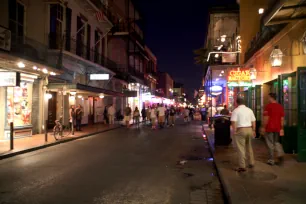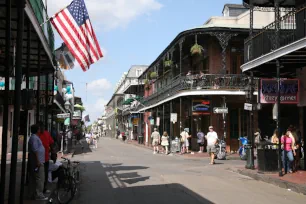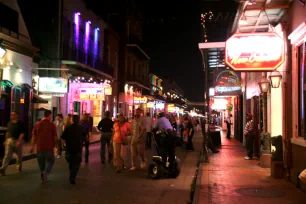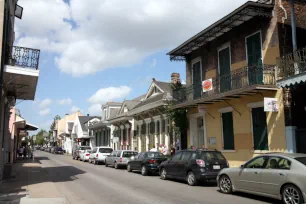Bourbon Street is an almost legendary historic street in the French Quarter. It is best known for its many bars and clubs and it is constantly crowded with tourists, especially at night.
Origin


Bourbon Street was initially laid out in 1721, when Adrien de Pauger created the street grid of New Orleans. The street was named after the royal Bourbon family, which at the time ruled over France and its colony Louisiana. For a long time, this was a residential street, and even one of the more prestigious places to live in New Orleans.
Storyville
Street of Sins


Many of the bars, jazz clubs and other establishments moved from Storyville to the French Quarter, which at the time was in a serious decline; most of the prosperous citizens had moved elsewhere. Many of the establishments settled in Upper Bourbon Street, which over time became synonymous with Sin.
During World War II many more strip clubs and bars opened on Bourbon Street, and today the west section from Canal Street to St. Ann has become one large entertainment area with bars, tourist shops and strip clubs; there are peep shows, cabarets and even drag shows. The bars offer famous local cocktails such as the ‘Hurricane’, and many of the places have live music, from Jazz to Rock.
The street is relatively quiet during the day, but it comes alive at night, when the street is full of – often drunk – crowds.
Lower Bourbon Street – the eastern section of the street – is much quieter, and near Esplanade Avenue it even becomes rather peaceful. Most of the houses here are residential. One exception is Lafitte’s Blacksmith Shop, the oldest bar in New Orleans.

